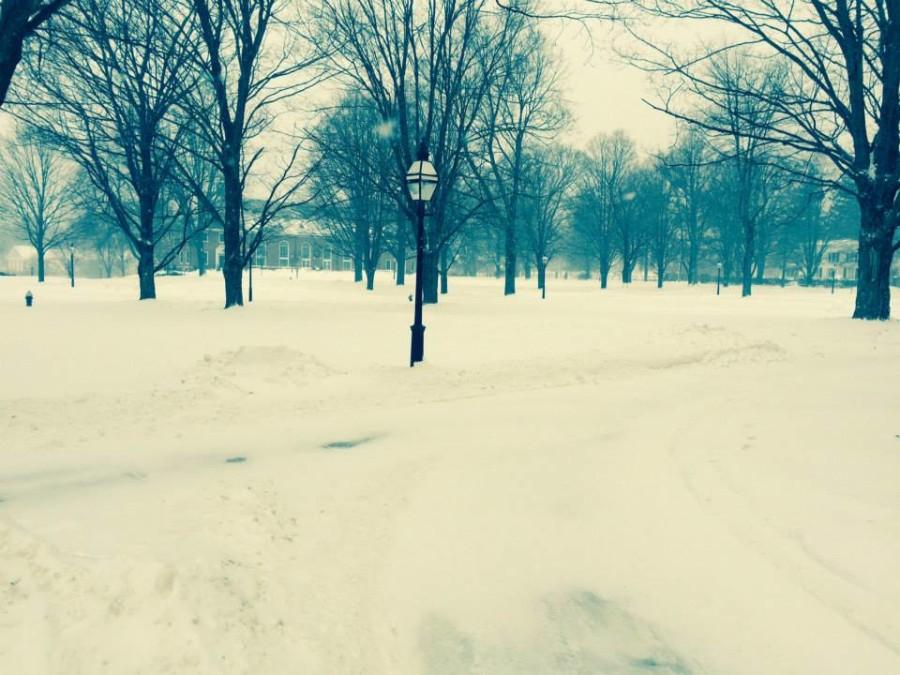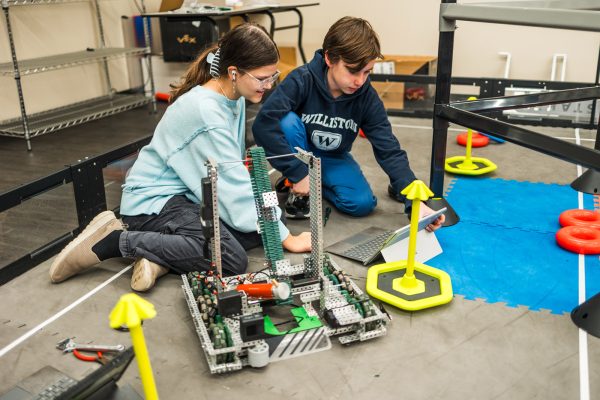Phys Plant Rocks!
Since we returned from Winter Break, Williston’s Physical Plant has had to contend with approximately seven snowstorms that left more than three inches of accumulated snow, and three storms where snowfalls have reached or exceeded ten inches.
What Williston students don’t see as we trudge through whiteouts and avoid black ice along paths between classes is the work that the Grounds Crew puts in throughout the day during a storm, beginning with spraying what is often referred to by students as “molasses,” but is actually called “Ice B’Gone,” around campus on the day before a storm is expected. This material, according to Grounds Manager Joe Zewinski, is a natural “by-product of a fermentation product” that keeps ice and snow from adhering to sidewalks. The salt that is spread on sidewalks is treated with the same substance.
If a storm takes place overnight, crews will come in before six a.m. to begin snow removal. Mr. Zewinski says that the most difficult part of dealing with these snowstorms has been “the timing of the storms. When they’re overnight we can come in early,” but when it is snowing during the day “all the activity that’s going on on campus” can be a challenge, because they have “to work around students and faculty and staff walking along sidewalks.”
Although each storm is different, when there is a major snowstorm often the “first priority is to make sure we have parking lots open,” Mr. Zewinski notes. Several members of the Grounds Crew will come in early to start clearing the lots, and then “a smaller crew will go out and start working on some of the academic buildings.” Another priority is to make sure the main sidewalks are open so students and teachers can walk from building to building.
After a major snowstorm, a crew of a dozen or more people can be working to clear campus at once. Mr. Zewinski’s Grounds Crew, several staff from Maintenance, Equipment Manager Jason Tirrell, and often members of Security who are not on duty. Mr. Zewinski also notes that students have been helpful with shoveling around buildings.
Not only have the crews been dealing with weekly snowfalls, they have had to contend with temperatures that often fall below 0° Fahrenheit and wind chills that make conditions even worse. Mr. Zewinski particularly notes the efforts of the shovel crews, saying, “They do a good job. It’s always easy to jump on a piece of equipment to start moving snow, but walking from building to building shoveling, that’s where it really happens. Just going around and around and being consistent, those guys are the ones who really make for a successful cleanup.”
Mr. Zewinski further comments, “That’s just the way that it is. That’s our job and as long as everybody’s patient, hopefully we don’t shut the place down, and we’ll just keep on moving it.”










